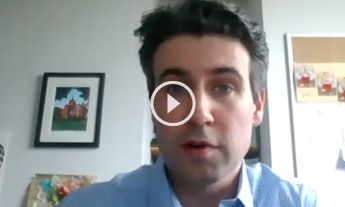Cancer and neoplasms
Growing Role of Cabozantinib Therapy in Differentiated Thyroid Cancer
Warren C. Swegal, MD, a head and neck cancer surgeon at Allegheny Health Network, discusses the role of cabozantinib (Cabometyx) for patients with radioactive iodine (RAI)–refractory differentiated thyroid cancer (DTC).
Cabozantinib is currently a second-line option for patients who have progressed on sorafenib (Nexavar) or lenvatinib (Lenvima) and are refractory or ineligible for RAI, based on the results of the COSMIC-311 study (NCT03690388), says Swegal. This was a double-blind, placebo-controlled, phase 3 trial of patients with DTC who failed first-line VEGF-targeted treatment. They received cabozantinib or placebo, and the investigators found cabozantinib significantly prolonged progression-free survival (PFS).
Swegal also discusses the breakthrough designation from the FDA granted to cabozantinib in 2021 based on interim results from the study. He says this signaled cabozantinib as a promising option, sped up its FDA approval, and also led to more scrutiny of its safety.
Following FDA approval of cabozantinib in this setting, he says it could led to moving cabozantinib to the first line or using it in a combination to improve efficacy for these patients.
TRANSCRIPTION:
0:08 | This is second-line when you consider systemic therapies. This is for patients who have failed either lenvatinib or sorafenib. The COSMIC-311 study was another phase 3, placebo-controlled trial, which looked at patients who had [progressed on] first-line treatment, and then were given either cabozantinib or placebo. Again, for those patients, the patients receiving the drug had a better overall and progression-free survival than those who received placebo. For those who have failed that first-line, it is a good second-line option.
0:50 | This [breakthrough] designation already means it’s a promising drug. Usually, drugs that don’t have a lot of promise or a lot of excitement behind them usually don’t get this designation. Already, that kind of labeled it as, this is the next thing. I think 1 [reason] is that it’ll hopefully help speed up the process of an FDA approval; 2, it also does mean there’s probably some increased scrutiny around it, but that’s a good thing. We want drugs to be well-tested.
But it also means that once there is clear FDA approval, it may bump it up in that treatment line. Now, we’re going to start looking at it, not as a second-line treatment, but maybe comparing it as a first-line treatment or using it in combination with other drugs. It opens the door for it to be used in a wider range of disease in patients.

